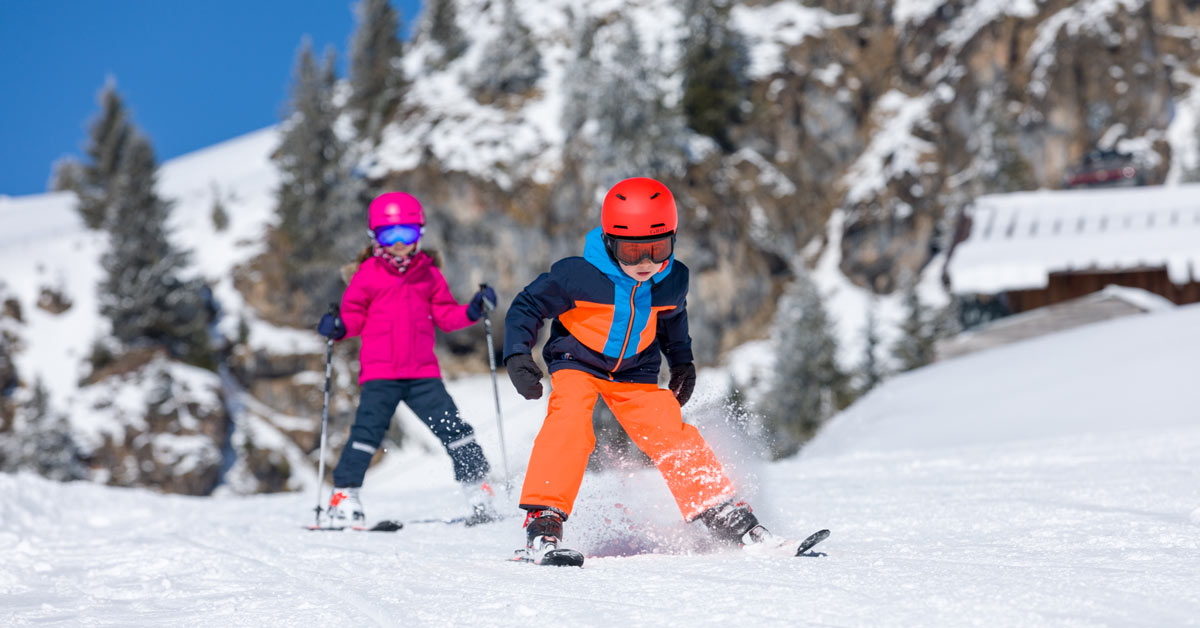Skiing is an exhilarating winter sport that allows you to explore snowy landscapes while challenging your physical limits. For beginners, the excitement of hitting the slopes is often paired with some apprehension, especially when it comes to choosing the right gear. Skiing involves unique equipment designed to enhance performance, safety, and comfort. If you’re a first-time skier, understanding the essentials of ski equipment is the key to a smooth, enjoyable, and safe start.
In this guide, we’ll walk you through the must-have ski equipment for beginners, covering everything from skis and boots to helmets and goggles. By the end, you’ll have a complete ski equipment list that will help you confidently navigate the slopes on your first adventure.
Why Having the Right Ski Equipment Matters
For beginners, having the correct ski equipment is more than just a matter of convenience—it’s essential for both safety and enjoyment. Skiing can be physically demanding, and the right gear will help reduce the risk of injury, keep you comfortable, and make it easier for you to learn and enjoy the sport. The wrong equipment can lead to discomfort, poor performance, and even accidents.
Beginners also face different challenges than experienced skiers, so it’s important to have gear that’s designed for newcomers. Let’s take a look at the most important pieces of ski equipment and what you should consider when purchasing or renting them.
Ski Equipment List for Beginners
- Skis
The centerpiece of any skiing experience is, of course, the skis themselves. For beginners, choosing the right pair of skis is crucial. The right skis will help you maintain control and balance while allowing you to progress at a comfortable pace. Here are the factors you should consider:- Length: Beginner skis should typically be shorter than those used by experienced skiers. The general rule is that skis should come up to between your chin and the top of your head. Shorter skis are easier to control, especially at slower speeds, and are more forgiving when it comes to turning.
- Width: For beginners, choosing wider skis can provide extra stability, especially in soft snow. Look for skis with a waist width of around 70-90 mm for better control.
- Flex: Skis come in different flex levels, which refer to how stiff or flexible they are. Beginners should opt for softer skis, which are easier to turn and maneuver at lower speeds.
- Rocker and Camber: The camber refers to the slight arch in the ski when placed flat on the ground. Beginner skis often have a slight rocker at the tip and tail, which helps initiate turns more easily and prevents the tips from catching in the snow.
- Ski Boots
Ski boots are one of the most important pieces of equipment for any skier, and they can make or break your skiing experience. Properly fitting boots are essential for comfort and control, as they are the direct connection between your body and your skis.- Fit: A snug fit is important. Your boots should feel tight but not painful. When trying on ski boots, make sure there’s no excessive movement inside, but your toes shouldn’t be crunched or pressed too tightly against the front. When you’re skiing, your boots will need to transmit your movements directly to your skis.
- Flex Rating: The flex rating of ski boots measures how stiff they are. Beginner ski boots typically have a softer flex rating, usually between 50 and 80. This allows for easier movement and greater comfort, as beginners don’t need the precision that stiffer boots provide.
- Liner and Padding: The inner liner of the ski boot is crucial for warmth and comfort. Look for boots with well-padded liners, as they will keep your feet warm and cushioned, reducing fatigue and blisters.
- Ski Bindings
Bindings are what attach your ski boots to your skis. While they may seem like a small detail, they play a vital role in both performance and safety. The key feature of bindings is their ability to release your boots in the event of a fall, which helps prevent leg and ankle injuries.- DIN Setting: Bindings are adjustable based on your weight, height, and skill level. The DIN setting determines the amount of force required for the bindings to release your boot in case of a fall. Beginners usually have a lower DIN setting, which allows for easier release to reduce the risk of injury.
- Compatibility: Ensure that your ski bindings are compatible with your ski boots. If you’re renting, the shop will take care of this, but if you’re buying, make sure everything works together seamlessly.
- Ski Poles
Ski poles help with balance, timing turns, and pushing yourself along flat areas. While they aren’t as critical as skis or boots, choosing the right poles can enhance your skiing experience.- Length: To find the right length for your ski poles, hold the poles upside down with the grip on the ground. Your arms should form a 90-degree angle at your elbows. Shorter poles are better for beginners as they make it easier to maneuver and turn.
- Material: Poles come in different materials, including aluminum, carbon fiber, and composite. For beginners, aluminum poles are a good choice because they are durable and affordable.
- Helmet
Safety is paramount for any skier, especially beginners. Skiing involves high speeds and falls are common, particularly when you’re learning. A helmet is essential to protect your head from injury.- Fit: The helmet should fit snugly but not be too tight. It should sit just above your eyebrows, and there should be no gaps between the helmet and your goggles.
- Ventilation: Look for helmets with adjustable ventilation. Skiing can be physically demanding, and proper airflow will help you stay comfortable throughout the day.
- Certification: Make sure the helmet is certified for snow sports safety standards, such as ASTM F2040 or CE EN1077.
- Goggles
Ski goggles protect your eyes from the sun, wind, and snow while providing clear vision in various weather conditions. They’re especially important for beginners who may not yet be accustomed to changing light and snow conditions.- Lens: Goggles come with different lens tints, which are suitable for varying light conditions. For beginners, a versatile lens that works well in a range of conditions, such as an amber or rose tint, is ideal.
- Fit: The goggles should fit comfortably on your face and create a seal to keep out snow and wind. Make sure they are compatible with your helmet, as some helmet designs can interfere with how goggles sit on your face.
- Anti-Fog Features: Fogging can be a major issue for beginners, especially if you’re working up a sweat while skiing. Look for goggles with anti-fog coatings or ventilation features to prevent them from steaming up.
- Ski Jacket and Pants
Staying warm and dry is critical to an enjoyable day on the slopes. Ski jackets and pants are designed to protect you from the cold, wind, and snow while allowing enough freedom of movement for skiing.- Waterproofing: Make sure your jacket and pants are made from waterproof material. Look for items with a waterproof rating of at least 10,000 mm to ensure protection against snow and moisture.
- Insulation: Depending on the climate and your personal preferences, you’ll want to choose insulated ski gear or go with a shell and add layers underneath. Insulated jackets and pants are great for staying warm, while a shell allows for more versatility in warmer conditions.
- Breathability: Skiing can be a high-intensity activity, so breathable materials are important to prevent overheating and sweating. Many ski jackets and pants come with ventilation zippers to allow airflow when needed.
- Gloves or Mittens
Cold hands can ruin a day of skiing, so a good pair of gloves or mittens is essential. Ski gloves and mittens are designed to keep your hands warm and dry while allowing you to grip your ski poles comfortably.- Waterproofing and Insulation: Just like with jackets and pants, waterproofing and insulation are key features to look for in ski gloves or mittens. Mittens are often warmer than gloves, but gloves offer more dexterity.
- Fit: Your gloves should fit snugly but still allow you to move your fingers easily. Many ski gloves come with adjustable cuffs to help keep snow out.
- Base Layers
Base layers are worn under your ski jacket and pants to help regulate your body temperature. They wick moisture away from your skin, keeping you warm and dry even if you’re sweating.- Material: Look for moisture-wicking fabrics like merino wool or synthetic materials. Avoid cotton, as it retains moisture and can leave you feeling cold and wet.
- Layers: Beginners should use a layering system, starting with a moisture-wicking base layer, an insulating mid-layer, and then a waterproof outer layer. This will help you adjust to changing weather conditions.
- Ski Socks
Proper ski socks are another often-overlooked item that can make a big difference in your comfort on the slopes.
- Material: Ski socks should be made from moisture-wicking materials, such as merino wool or synthetic fibers. Avoid cotton, as it holds onto moisture and can lead to cold, wet feet.
- Thickness: You don’t need overly thick socks, as modern ski boots are well-insulated. Thin to medium-weight socks that fit snugly without bunching are ideal.
Additional Tips for Beginners
- Renting vs. Buying: If you’re new to skiing, renting equipment is often a good idea. It allows you to try out different skis and boots to see what works for you before making a purchase. Most ski resorts have rental shops that offer beginner-friendly gear.
- Get a Professional Fit: If you do decide to buy your equipment, make sure to get professionally fitted for your ski boots. Poorly fitting boots can lead to discomfort, difficulty controlling your skis, and even injury.
- Take Lessons: Investing in a few ski lessons is one of the best things you can do as a beginner. A qualified instructor will teach you the fundamentals of skiing and help you get comfortable with your gear, making your experience more enjoyable and safe.
Conclusion
For beginners, having the right ski equipment is crucial for both safety and enjoyment. From selecting the right skis and boots to ensuring you have the proper protective gear, every piece of equipment plays an important role in your skiing experience. By following this ski equipment list and investing in the right gear, you’ll be well-prepared to hit the slopes and make the most of your time skiing.



